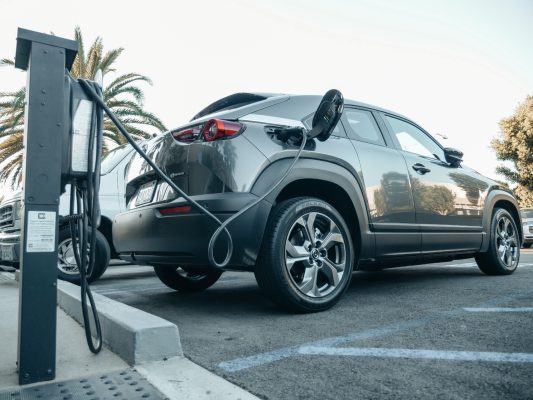
Fleets and ESG work together for positive change
Fleet ManagementBusiness endeavours to reduce carbon emissions for a more sustainable future have been performed under the banner of Corporate Social Responsibility (CSR). In recent times, the principles of CSR are being captured in a broader framework known as Environment, Social and Governance (ESG).
Road transport in both New Zealand and Australia is one of the biggest fossil-fuel-emitting sectors, so the link between effective ESG activity and fleet planning is essential. The NZ Clean Car Standard and the recent release of the Australian Federal Government’s National Electric Vehicle Strategy provide further incentive to step on the accelerator.
What is ESG?
According to global consulting firm PwC, ESG goes beyond environmental issues like climate change and resource scarcity to capture all the non-financial risks and opportunities inherent in a company’s day-to-day activities.
“CSR has been on the business radar for many years and provides a qualitative measurement of a businesses impact on society and its stakeholders,” PwC explains. “On the other hand, ESG is a way to quantifiably measure a company’s impact on society and the environment, using metrics that deliver long-term stakeholder value.”
“Increasingly, organisations are developing sustainability strategies that focus on creating value amongst a broad group of stakeholders – including employees, customers, suppliers, investors, and community groups – whilst managing their broader obligations to society and the environment. Stakeholders are also demanding companies be more transparent about their performance.”
- Environmental
The Environmental pillar of ESG is self-explanatory. As McKinsey explains, “The energy your company takes in and the waste it discharges, the resources it needs, and the consequences for living beings as a result. Not least, E encompasses carbon emissions and climate change. Every company uses energy and resources; every company affects, and is affected by, the environment.”
- Social
The Social pillar addresses the relationships your company has, and the reputation it fosters, with workers, people, and institutions in the communities where you do business.
- Governance
The Governance pillar refers to the internal systems practices, controls, and procedures a company adopts to govern itself, make effective decisions, comply with the law, and meet the needs of external stakeholders.
ESG in practice
The three pillars that make up ESG have distinct qualities that enable organisations to report on, and quantify, their performance in these areas.
Examples of ESG data include the quantifying of a company’s carbon emissions, water consumption, or customer privacy breaches. Institutional investors, stock exchanges, and boards increasingly use sustainability and social responsibility disclosure information to explore the relationship between a company’s management of ESG risk factors and its business performance.
The PwC model provides some handy examples of how organisations break down ESG in their reporting:
Environmental
- Managing carbon and climate change vulnerabilities;
- Water, waste, and pollution management;
- Transitioning to a circular economy;
- Renewable energy and clean technology;
- Recognising the unique rights of First Nations people to access, maintain and protect their lands.
Social
- Human capital development (people and culture);
- Health and safety in the workplace;
- Ethical supply chain and sourcing/procurement;
- Human rights;
- Privacy and data security;
- Community engagement, and a focus on First Nations people.
Governance
- Reporting on the organisation’s progress towards meeting their Environment, Social and Governance goals;
- Risk mitigation and management;
- Diversity in the boardroom (and across the organisation);
- Executive pay;
- Tax transparency;
- Business ethics;
- Policies that enhance corporate behaviour, including the protection of human rights.
Fleets and ESG
There are a number of ways in which an organisation’s ESG goals and vehicle fleets can work together for positive change. Workplace health and safety, ethical supply chain procurement, and staff development and people management, for example. But, by far, the main relationship between ESG goals and vehicle fleets is reducing carbon emissions and pollution to provide a cleaner and more sustainable environment.

The National Electric Vehicle Strategy and Clean Car Standard
In April 2023, the Australian Government announced its National Electric Vehicle Strategy. Chris Bowen, Minister for Climate Change and Energy; and Catherine King, Minister for Infrastructure, Transport, Regional Development and Local Government, both described the Strategy as “a comprehensive roadmap to ensure Australians have a better choice of electric vehicles, and encourage greater use of cleaner, cheaper-to-run vehicles.”
As part of the Strategy, the government intends to impose a new fuel efficiency standard on new cars, and encourage electric vehicle uptake in what Paul Karp and Josh Butler described in The Guardian as “an attempt to cut 3 [million] tonnes of carbon emissions by 2030″.
“Australia and Russia are among the only developed countries that don’t have fuel efficiency standards,” they presented in a joint press release. “The absence of a standard has meant Australians households and businesses are missing out on greater choice of car models and paying more in fuel costs to run their cars because manufacturers prioritise sending more efficient vehicles to countries with standards in place.”
“On average, new cars in Australia use 40 percent more fuel than the European Union, 20 percent more than the United States, and 15 per cent more than New Zealand.”
“More efficient vehicles will produce fewer emissions – meaning their environmental impact is lower, and they are cheaper for motorists to run.”
Aotearoa New Zealand has its own vehicle emissions standards framework. Called the Clean Car Standard (CCS), it is one of a range of government initiatives introduced to tackle CO2 emission levels in transport, as part of a wider effort to address climate change.
Introduced in January 2023, the CCS scheme measures a vehicle’s CO2 value and determines whether a charge may need to be paid or, alternatively in the case of an EV, a credit earned for the vehicle. The scheme applies to all light vehicles, except for motorcycles, trailers, mopeds, temporary vehicle imports and vehicles which do not require entry certification. Motorsport vehicles, scratch-built vehicles, special interest vehicles and vehicles more than 40 years old are also exempt from the CCS.
Despite the release of the Australian strategy, neither the actual fuel efficiency standards that need to be met nor EV uptake targets were announced in the release. These numbers are expected to be finalised through a consultation process “with industry and the community… in the coming months.”
But the message is clear: Australia is following NZ with a commitment to increasing the proliferation of EVs on local roads and addressing the barriers that have stood in the way of “electric vehicle uptake, whether it be demand, supply or infrastructure.”
SG Fleet is also committed to ensuring cleaner, more fuel-efficient vehicles — passenger, commercial and heavy transports — are available for our customers to consider. With cheaper running costs and growing incentives, not only will your organisation’s bottom-line be improved but fleet managers will also be able to make a sustainable and meaningful contribution to your organisation’s ESG targets.
Submissions on the design of fuel efficiency standards for Australia can be made through www.cleanercars.gov.au
The Australian National Electric Vehicle Strategy is available at https://www.dcceew.gov.au/energy/transport
The NZ Clean Car Standard is available at
https://www.nzta.govt.nz/vehicles/clean-car-programme/clean-car-standard/
Do you have the right plans in place to move your business to a lower emission transport future? Start a conversation with SG Fleet today
 Driving Insights
Driving Insights




